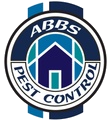Webworms in Oklahoma: What They Are, How They Harm Trees, and How to Control Them
If you’ve noticed unsightly, silken webs draping the branches of your Oklahoma trees, chances are you’re dealing with webworms. These pests are more than just an aesthetic nuisance—they can cause significant stress to your trees, especially if left untreated.
At ABBS Pest Control, we specialize in diagnosing and treating webworm infestations across the Oklahoma City metro area. Understanding their lifecycle and catching them early is key to keeping your trees healthy and thriving year after year.
What Are Webworms?
Webworms are the larvae (caterpillars) of the Hyphantria cunea moth, also known as the fall webworm. Despite their name, they typically begin their damage in late summer and early fall, although sightings as early as mid-July are not uncommon in Oklahoma due to the heat and moisture.
Unlike bagworms that create individual protective cases, webworms build large communal webs that cover the ends of tree branches—making their presence hard to ignore.
Lifecycle of Webworms in Oklahoma
Understanding the webworm lifecycle is essential to timing treatments effectively. In Oklahoma’s warm climate, there can be two generations per year, increasing the likelihood of recurring infestations.
1. Egg Stage
Adult female moths lay hundreds of tiny, white eggs on the undersides of tree leaves in mid-summer. These hatch in about a week.
2. Larvae Stage (Caterpillars)
The newly hatched larvae immediately begin spinning their distinctive webs at the tips of branches, enclosing leaves and feeding inside the protective silk. This is when they are most destructive.
3. Pupal Stage
After 4–6 weeks of feeding, the caterpillars leave the webs, drop to the ground, and pupate in the soil or leaf litter.
4. Adult Moth Stage
Adult moths emerge in early summer to start the cycle again. The second generation of caterpillars tends to cause more noticeable damage.
What Trees Do Webworms Affect in Oklahoma?
Webworms aren’t picky. They’ve been recorded on more than 100 species of deciduous trees, but in Oklahoma, they’re especially common on:
-
Pecan
-
Persimmon
-
Sweetgum
-
Hickory
-
Willow
-
Elm
-
Mulberry
-
Oak
Because of Oklahoma’s warm climate and rural-urban mix of vegetation, trees in neighborhoods, parks, and backyards are often susceptible.
How Webworms Damage Trees
While webworms rarely kill trees outright, the defoliation and stress they cause can severely impact a tree’s long-term health—especially if infestations happen year after year.
Key issues include:
-
Reduced photosynthesis from leaf loss
-
Aesthetic damage that lowers property value
-
Weakened trees, making them more susceptible to drought, disease, and other pests
-
Stunted growth in younger or ornamental trees
For homeowners in Oklahoma City suburbs like Edmond, Moore, Norman, and Yukon, this damage can quickly become a recurring, expensive problem if not addressed early.
Early Detection is Key
By the time large webs are visible, significant feeding has already occurred. That’s why early detection and preventative treatments are essential.
At ABBS Pest Control, we train our technicians to spot early-stage infestations before the webs take over. Our seasonal inspections, starting in late spring and early summer, are designed to catch webworm activity before they mature into full-blown damage-makers.
ABBS Pest Control: Your Local Webworm Experts
As a woman-owned pest control company based in Oklahoma City, ABBS Pest Control understands the unique pest challenges of our climate. Our experienced team provides:
✅ Targeted tree inspections
✅ Customized treatment plans
✅ Environmentally responsible solutions
✅ Preventative services to reduce future outbreaks
✅ Education and resources for homeowners
We don’t just treat pests—we help you protect your investment in your trees and landscape.
Webworm Control Methods We Use
Depending on the severity of the infestation, we may recommend a combination of:
1. Pruning & Manual Removal
For light infestations, removing webbed branches early is effective. We help guide homeowners through safe removal or provide this service directly.
2. Biological Insecticides (BT)
Products like Bacillus thuringiensis (BT) are effective and environmentally friendly. They target larvae without harming beneficial insects.
3. Systemic Tree Treatments
For large or high-value trees, we may apply systemic insecticides to prevent larvae from feeding.
4. Timed Sprays
We apply insecticides when larvae are newly hatched and most vulnerable—this is why early detection is so critical.
When Should You Call ABBS Pest Control?
Call us as soon as you see small webs forming on your tree limbs. Don’t wait until the canopy is overrun—by then, extensive damage has already occurred.
Ideal times for prevention and treatment in the OKC metro area:
-
Early summer (June–July): Inspection and early treatments
-
Mid-to-late summer (August–September): Control of second generation
-
Fall (October): Clean-up, prevention planning for next year
Protect Your Trees—Call ABBS Today
Webworms may seem like a seasonal nuisance, but their long-term impact on your trees—and your property’s value—can’t be ignored.
ABBS Pest Control is your trusted expert in the Oklahoma City metro area, including Edmond, Moore, Norman, Midwest City, and surrounding communities.
📞 Call us at (405) 582-2114
🌐 Visit www.abbsllc.com
✅ Request a free inspection today and let us help you stop webworms before they take over.
